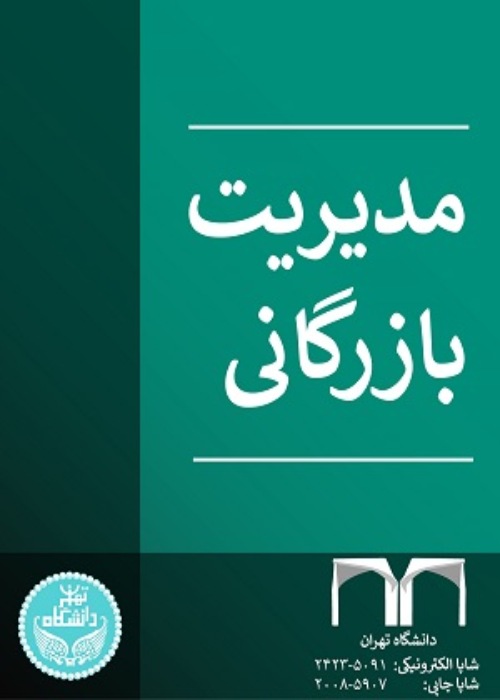Developing a Planned Journey Map of Banking Mobile Services Users (Case Study: Mellat Bank)
Given that the customers’ experience in each industry, service and communication channel is unique and special, this study aims at identifying and examining the strengths and weaknesses of the existing models in the developing customers’ experimental map based on develment of journey map model planned on mobile service users. In this study, in order to create knowledge background in the field of customer experience in the service provider organization, a model is proposd which aims to identify customer contact and experience points and drawing them in the form of customer-planned journey map, as a goal map for the customer.
The paradigm of the present research is interpretive. From the audience’s point of view, this grounded study is considered applied in nature. This research is qualitative based on analogy. The data collection in this field study is done using qualitative case study. The qualitative part of this study is descriptive-exploratory in terms of purpose. The present study is among cross-sectional studies. The case study is semi-structured and the context of the phenomenon under study is assumed to be fixed in Iran. Based on the the purpose of the preent study (planned journey map), mystery shopping method is used for data analysis; after collecting the data, the researcher's experimental observation technique, content analysis o and interviews were analyzed using Maxqda software after codification.
After identifying pain and contact points in different stages of the customer’s journey including previous experience, awareness and information, search, persuasion, taking action, use of service and after service (feedback and evaluation, sharing experience and support), the results of the analysis of the planned journey map on Mellat Bank and Mellat Plus applications were classified and drawn in the form of 3 general experiences including service experience (transaction-financial experience, non-financial interaction, e-wallet, deposit), technical experience and visual experience.
This study developed a framework for customer’s journey map in the form of a planned journey map to draw customer’s experience from the perspective of service provider. This framework uses product usability test and mystery shopping technique in order to achieve the designed experience by the organization. The most important differences between the planned journey map and the common methods are: 1) the systematic nature of the approach, taking into account all phases and stages of the customer’s experience, especially the past experiences from the previous version of the application; 2) focusing on pain points as well as good and bad experiences of working with the designed product; 3) focusing on the out-of-service contact points through different phases and steps; 4) focusing on the customer’s feelings of the service provided from the perspective of the organization; 5 ) identifying systematic deviations in the service providing process from the customer’s experience perspective; and 6) helping the qualitative development of the services provided considering the dynamics of the customers’ experience. The customer’s journey plan can help the organization increase its knowledge of how to provide services. Prior to providing any unplanned service, all customers’ journey maps must be completed to minimize deviations. In the proposed model, the start and end points are presented in each phase and path are provided in order to reach the map during the service as well as before and after the service. The organizations can visualize their planned journey map considering the type of product or service and the process defined according to the customer. At the same time, given the unique experience of each organization, the steps and contact points must be extracted qualitatively.
- حق عضویت دریافتی صرف حمایت از نشریات عضو و نگهداری، تکمیل و توسعه مگیران میشود.
- پرداخت حق اشتراک و دانلود مقالات اجازه بازنشر آن در سایر رسانههای چاپی و دیجیتال را به کاربر نمیدهد.



